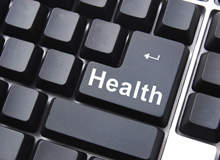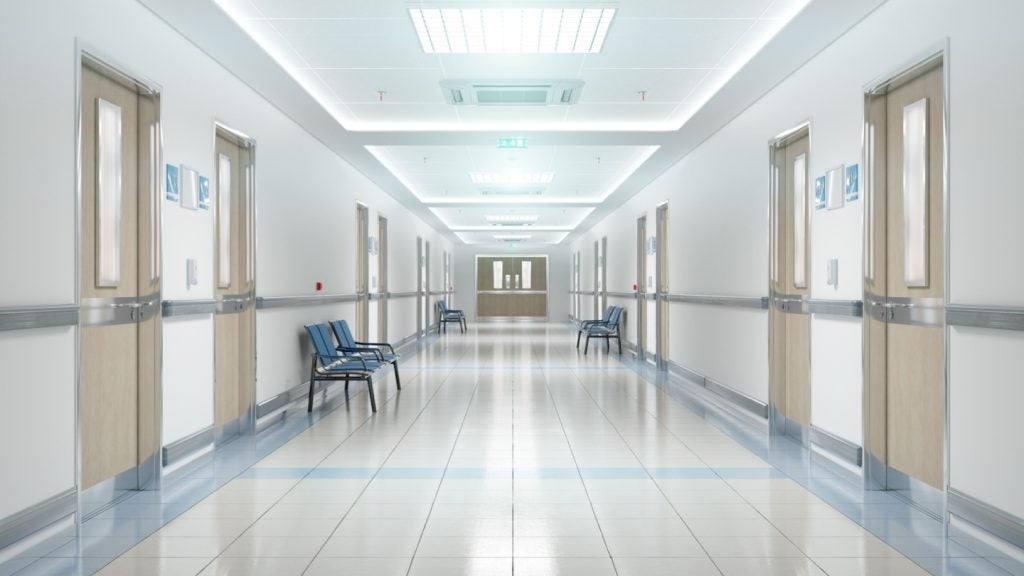
Traditionally a barrier, cost is becoming less of an issue when deciding whether or not to invest in healthcare information technology (IT) systems, as they become recognised for the significant financial incentives and improvements to efficiency they offer.
Healthcare providers, however, continue to waver between the intrinsic value derived and concerns over the initial outlay, slow return on investment and the loss of productivity being too great.
The Healthcare Information and Management Systems Society (HIMSS) has evidence showing how the value of healthcare IT systems far outweighs the consequences. In fact, health IT will be a key contributor to an enhanced healthcare delivery system by improving patient outcomes, workflow efficiencies and financial sustainability.
The 2009 Annual HIMSS Leadership Survey helps define priority objectives in today’s healthcare industry. According to the 304 health IT professionals who participated, 29% indicated sustaining financial viability, and 24% indicated improving patient safety and quality of care as their key business objectives. Improving operational efficiencies and lowering operating costs by re-thinking process techniques was selected by 23% of respondents.
To achieve these objectives, the greatest health IT priorities included half of respondents indicating their organisations would focus on clinical systems: 31% on having full electronic health records (EHRs) and 17% on complementing their EHR systems with computerised provider order entry (CPOE).
The EHR is a secure, real-time, point-of-care, patient-centric information resource for clinicians. It aids clinicians’ decision-making processes by providing access to patient health record information and by incorporating evidence-based decision support. It automates and streamlines the clinician’s workflow, closing loops in communication and response that result in delays or gaps in care. It also supports the collection of data for uses other than direct clinical care, such as billing, quality management, outcome reporting, resource planning, and public health disease surveillance and reporting.
How well do you really know your competitors?
Access the most comprehensive Company Profiles on the market, powered by GlobalData. Save hours of research. Gain competitive edge.

Thank you!
Your download email will arrive shortly
Not ready to buy yet? Download a free sample
We are confident about the unique quality of our Company Profiles. However, we want you to make the most beneficial decision for your business, so we offer a free sample that you can download by submitting the below form
By GlobalDataEvidence of IT systems value
The EHR, as a tool, can be leveraged to track, monitor, trend and improve patient outcomes, as illustrated by recipients of the HIMSS Davies Awards of Excellence, which award institutions for excellence in EHR implementation and derived value.
When used properly, EHR systems enhance patient safety by alerting clinicians to harmful drug interactions or allergic reactions to prescribed medicines and helping clinicians manage the health of patients with complex chronic conditions and/or multiple co-morbidities.
Each of the Davies Awards recipients in this article represents accomplishments at the time of their award. The organisations’ EHR efforts were not about the technology, but the patient and the information that changes the way healthcare is practised and delivered.
Many examples of return on investment (ROI) are illustrated: soft ROI, which highlights important, but not always financially quantifiable, improvements in patient care, workflow and other areas; and hard ROI, measuring money
(see Table 1).
Soft ROI
Soft ROI carries just as much, and possibly more, importance to healthcare institutions because many soft-return factors are transformative: medication error reduction via decision-support systems save lives; access to a patient’s entire healthcare history helps improve care and aggregated data analysis assists in focusing providers on performance enhancements.
Citizens Memorial Healthcare (CMH), an integrated rural healthcare delivery system servicing nine counties in south-west Missouri, is nationally recognised for how efficiently healthcare can be delivered. One way CMH achieved this level of recognition is through its use of an EHR system, which crosses the continuum of care, including hospital, long-term care, home care and physician clinics, and is used by all admitting physicians.
CMH’s chief information officer Denni McColm, says: “Implementation of tools to enhance safety and quality of patient and resident care are our greatest achievements since implementation.” At CMH, physicians now have the option of entering orders at hospitals or long-term care facilities or even remotely.
The New York Children’s Health Project (NYCHP), a programme of Montefiore Medical Centre and the Children’s Health Fund, works with homeless children and families, runaway youths and victims of domestic violence via high-tech mobile medical units and on-site shelter clinics equipped with a wireless EHR system. Using its EHR with functions including practice management, medical charting, e-prescribing, and querying and reporting, NYCHP’s medical team provides consistent care, with quick access to complete records in the field, rather than the challenges associated with paper charts.
“Through the EHR, not only is a patient’s entire medical record available at every site they received care, providers can collaborate by accessing a comprehensive medical summary to facilitate diagnosis of his or her conditions,” says Karen Redlener, executive director, NYCHP.
“Clearly the EHR enhances the quality of care for any patient with complex healthcare needs. But for patients who are transient, an EHR is a vital component of an appropriate healthcare delivery system.”
Specific examples of ROI include 96% of asthmatics had documented severity or control scores; 98% of persistent asthmatics were prescribed controller medications, markedly better than the national average of 87% (2007 Medicaid HEDIS data) and 92% of smokers were assessed for stage of readiness to quit and received at least brief counselling (2007 national Medicaid HEDIS average was 68%).
In the same way as CMH and NYCHP, the overarching goal for Valdez Family Clinic, a single-location practice that serves the economically disadvantaged and medically underserved community in San Antonio, Texas, was to achieve the clinical benefits of having complete, up-to-date patient charts for every visit; to eliminate problems related to lost, misfiled or unreported labs and improve patient care with medical alerts.
After implementation, all Valdez Family Clinic staff members could access and modify the same chart at the same time and task each other items for particular charts. Additionally, lab results are now delivered to Dr Alicia V Valdez’s primary work screen for her review. If a result is missing, the EHR provides a medical alert flag on the chart.
A positive impact on care
CMH, NYCHP and Valdez Family Clinic’s outcomes confirm findings from the 2009 HIMSS Leadership Survey. Nearly two thirds of respondents noted IT can have a positive impact on patient care, either by reducing medical errors (38%) or improving clinical quality outcomes (25%). This may be a result of the widespread role of clinicians with regard to issues such as systems evaluation and developing policies and procedures on the use of IT systems.
Results from the Leadership Survey also verify that clinicians’ input and support are vital to achieving improved patient outcomes and safety levels, enhanced processes, strengthened communications and improved regulatory and compliance, while 95% noted that clinicians play some role in the IT process. Most (82%) reported clinicians act as project champions, educating and leading other clinicians.
Hard ROI
The definition of hard ROI on EHRs involves two measurements: quantifiable returns that can be demonstrated in financial terms and process improvements that would suggest cost savings that may fit an identifiable – or measurable – metric. Major categories include patient flow, materials and staffing reductions, and billing improvements.
For the Valdez Family Clinic, hard ROI for implementation, including hardware and training ($56,810), has been better than anticipated. The single-location family practice clinic has achieved financial, billing and process improvements that resulted in a return of more than 325% the first year.
“Billing has been moved in-house, saving of $31,000 a year. This saving alone offset the cost of software,” said Dr Valdez.
“Additionally, we saw the average billing increase of $21.93 for each patient visit, which resulted in an estimated $210,528 increase in billing in 2007, and decreased overtime by $2,400, for a total of $243,928.”
CMH, on the other hand, reaped a positive return in five years by growing admissions, increasing revenue, eliminating five roles and jettisoning expenses associated with paper records.
Specifically, CMH saw net patient revenues increase 23% after the EHR implementation. It also experienced a decrease in accounts receivable for its physicians from more than 80 days to fewer than 50 days, by centralising billing, charging functions and consolidating the databases of 16 clinics.
For White River Rural Health Care Centre, which offers quality, affordable healthcare for rural residents through 24 medical locations across rural Arkansas, using EHRs in all locations as part of its Total Care System, allowed it to open five new facilities without federal funding. The efficiencies also allowed it to take its workforce from 200-plus, four years ago, to 165 employees today. According to White River Rural Health Centre chief information officer, Greg Wolverton, the cost
savings related to workforce improvements pay for annual EHR software support.
Wolverton acknowledges implementing the EHR requires funding and an understanding of the level of time and commitment involved, “but it does not have to be as expensive as people think,” he says. “Our experience is if you think it through and understand how the programme and your organisation works, you can create a realistic budget with realistic costs.”







